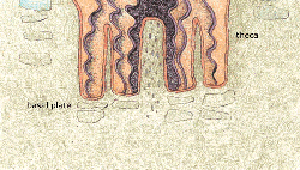How Do Stony Corals Grow? What Forms Do They Take?
 Over the course of many years, stony coral polyps can create massive reef structures. Reefs form when polyps secrete skeletons of calcium carbonate (CaCO3). Most stony corals have very small polyps, averaging 1 to 3 millimeters in diameter, but entire colonies can grow very large and weigh several tons. As they grow, these reefs provide structural habitats for hundreds to thousands of different vertebrate and invertebrate species.
Over the course of many years, stony coral polyps can create massive reef structures. Reefs form when polyps secrete skeletons of calcium carbonate (CaCO3). Most stony corals have very small polyps, averaging 1 to 3 millimeters in diameter, but entire colonies can grow very large and weigh several tons. As they grow, these reefs provide structural habitats for hundreds to thousands of different vertebrate and invertebrate species.
When polyps are physically stressed, they contract into their calyx so that virtually no part is exposed above their skeleton. This protects the polyp from predators and the elements (Barnes, R.D., 1987; Sumich, 1996). At other times, polyps extend out of the calyx. Most polyps extend the farthest when they feed.
Reef-building corals exhibit a wide range of shapes. For instance, branching corals have primary and secondary branches. Digitate Corals look like fingers or clumps of cigars and have no secondary branches. Table corals form table-like structures and often have fused branches. Elkhorn coral has large, flattened branches. Foliase corals have broad plate-like portions rising in whorl-like patterns. Encrusting corals grow as a thin layer against a substrate. Massive corals are ball-shaped or boulder-like and may be small as an egg or as large as a house. Mushroom corals resemble the attached or unattached tops of mushrooms.
 Deep Sea Crabs
Deep Sea Crabs